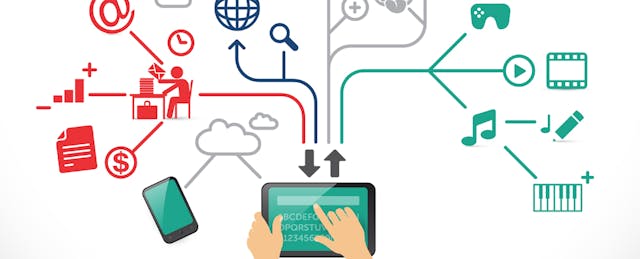eSpark is partnering with JAMF, a Minneapolis-based company whose mobile device management (MDM) tool, Casper Suite, currently services roughly 3 million Apple devices used across an estimated 4,000 schools. (Many businesses and government organizations also rely on JAMF to manage large-scale rollouts of Apple devices.)
For eSpark, a Chicago, IL-based startup that curates a customized playlist of educational iOS apps for students, this deal opens the doors to a wider network of potential school and district clients. The company has developed its own MDM tool to automatically push recommended apps to students’ devices. But here’s the catch: only one MDM service can be used on Apple devices, which means that schools who were already on JAMF—or any other third-party MDM provider—would not be able to use eSpark.
“We would try to convince the school tech departments to take their iPads off of their MDM and use our own, Ray Lyons, Vice President of Strategic Partnerships at eSpark, tells EdSurge. “But that was crazy. The integration came about because the customers who wanted to use [eSpark] wanted to continue using JAMF. They said, ‘you guys need to figure this out.’”
According to Dave Saltmarsh, Education Evangelist at JAMF Software, the homegrown MDM service built by eSpark doesn’t offer the full range of device management capabilities that districts wanted, such as the ability to disable the camera function.
The majority of JAMF’s 6,000 customers are education institutions. For Saltmarsh, the partnership with eSpark was a matter of the two organizations having “mutual customers and solving mutual problems.”
The fruits of the partnership will be mostly invisible to eSpark’s end users. Teachers set learning goals for students, for which eSpark will recommend different apps that address the students’ learning needs. The company claims its full-time team of curators have vetted over 50,000 educational apps over the past five years. Of these, only an estimated 1,000 make the cut to be recommended to students.
These apps will automatically show up on students’ devices without any need for teachers and IT staff to fiddle with access and authentication settings for each individual device. When the students are done with the app, it will be removed from their devices. Apps can also be re-licensed to another student—which means schools do not have to purchase licenses for every student. “You only need to buy as many licenses as the number of students who will be simultaneously using the app,” says Saltmarsh.
Managing Apple devices can be a frustrating process for school IT administrators, especially when compared to Chromebooks, which comes with a built-in MDM service (that costs $30 per device per year). Recently, Apple has stepped up efforts to streamline device management with the launch of Apple School Manager and Managed Apple IDs. These tools are still in the early stages of adoption, and it remains to be seen whether they offer the full device management controls currently offered by JAMF.
“This deal definitely expands our market considerably,” says Lyons, who adds that “the business sense is pretty clear-cut” from eSpark’s perspective.


